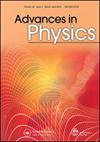Quantum trajectories and open many-body quantum systems
IF 35
1区 物理与天体物理
Q1 PHYSICS, CONDENSED MATTER
引用次数: 487
Abstract
The study of open quantum systems – microscopic systems exhibiting quantum coherence that are coupled to their environment – has become increasingly important in the past years, as the ability to control quantum coherence on a single particle level has been developed in a wide variety of physical systems. In quantum optics, the study of open systems goes well beyond understanding the breakdown of quantum coherence. There, the coupling to the environment is sufficiently well understood that it can be manipulated to drive the system into desired quantum states, or to project the system onto known states via feedback in quantum measurements. Many mathematical frameworks have been developed to describe such systems, which for atomic, molecular, and optical (AMO) systems generally provide a very accurate description of the open quantum system on a microscopic level. In recent years, AMO systems including cold atomic and molecular gases and trapped ions have been applied heavily to the study of many-body physics, and it has become important to extend previous understanding of open system dynamics in single- and few-body systems to this many-body context. A key formalism that has already proven very useful in this context is the quantum trajectories technique. This method was developed in quantum optics as a numerical tool for studying dynamics in open quantum systems, and falls within a broader framework of continuous measurement theory as a way to understand the dynamics of large classes of open quantum systems. In this article, we review the progress that has been made in studying open many-body systems in the AMO context, focussing on the application of ideas from quantum optics, and on the implementation and applications of quantum trajectories methods in these systems. Control over dissipative processes promises many further tools to prepare interesting and important states in strongly interacting systems, including the realisation of parameter regimes in quantum simulators that are inaccessible via current techniques.量子轨迹与开放多体量子系统
随着在单个粒子水平上控制量子相干性的能力在各种物理系统中得到发展,开放量子系统(表现出与其环境耦合的量子相干性的微观系统)的研究在过去几年中变得越来越重要。在量子光学中,对开放系统的研究远远超出了理解量子相干性的分解。在那里,与环境的耦合被充分理解,它可以被操纵来驱动系统进入所需的量子状态,或者通过量子测量中的反馈将系统投射到已知状态。许多数学框架已经被开发出来来描述这样的系统,对于原子、分子和光学(AMO)系统,它们通常在微观水平上提供了对开放量子系统的非常精确的描述。近年来,包括冷原子分子气体和俘获离子在内的AMO系统被大量应用于多体物理研究,将以往对单体和少体系统开放系统动力学的理解扩展到多体环境中变得非常重要。在这种情况下,一个已经被证明非常有用的关键形式是量子轨迹技术。这种方法是在量子光学中发展起来的,作为研究开放量子系统动力学的数值工具,并且属于更广泛的连续测量理论框架,作为理解大类开放量子系统动力学的一种方法。本文综述了近年来在AMO背景下研究开放多体系统的进展,重点介绍了量子光学思想的应用,以及量子轨迹方法在这些系统中的实现和应用。对耗散过程的控制承诺了许多进一步的工具来准备强相互作用系统中有趣和重要的状态,包括在量子模拟器中实现通过当前技术无法实现的参数制度。
本文章由计算机程序翻译,如有差异,请以英文原文为准。
求助全文
约1分钟内获得全文
求助全文
来源期刊

Advances in Physics
物理-物理:凝聚态物理
CiteScore
67.60
自引率
0.00%
发文量
1
期刊介绍:
Advances in Physics publishes authoritative critical reviews by experts on topics of interest and importance to condensed matter physicists. It is intended for motivated readers with a basic knowledge of the journal’s field and aims to draw out the salient points of a reviewed subject from the perspective of the author. The journal''s scope includes condensed matter physics and statistical mechanics: broadly defined to include the overlap with quantum information, cold atoms, soft matter physics and biophysics. Readership: Physicists, materials scientists and physical chemists in universities, industry and research institutes.
 求助内容:
求助内容: 应助结果提醒方式:
应助结果提醒方式:


